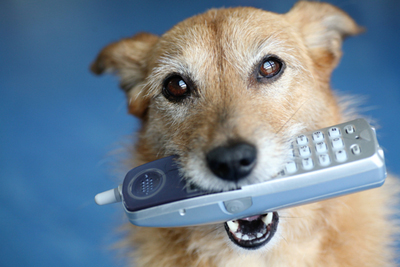
Dogs are incredibly adaptable and can be trained to do almost anything, including using a range of interactive technology, for example the kind we have in our homes (washing machine, telephone, light switches, etc.). However, anyone would struggle and underperform if they had to use devices that are not designed with one’s physical and psychological characteristics in mind, which is why designing interactive systems from a user-centred perspective is so important, particularly for professional dogs such as assistance dogs.
User-centred design means that an interactive technology is designed ‘around’ a particular user group in order to best support them in their activities. In particular, the technology needs to satisfy specific usability goals (e.g., it should be safe to use, it should be easy to learn how to use, it should help users to perform a task efficiently) and experience goals (e.g., it should be motivating and stimulating to use). To satisfy these requirements, the technology needs to be informed by the users’ characteristics and preferences, some of which can be expected to be more common among the users while others are more specific.
As a species and as technology users, dogs share some physiological and psychological characteristics in common with humans; however, they also present substantial differences. For example, like humans, dogs have eyes, limbs, mouth and nose, and can categorise objects, learn by association and remember things they have learnt. However, dogs don’t see all the colours we see, but only those in the ranges of yellow/brown and blue, so buttons and controls that use red are not dog-friendly. They have paws and not hands with agile fingers, so small switches are hard for them to operate. They use their paws for a range of activities, but when it comes to manipulating things, they tend to use their mouth, so door handles are a challenge for them, especially if they are hard to reach. Dogs don’t have the same capacity of abstraction and generalisation that humans have, and heavily rely on constancy and consistency to make sense of the world around them, so when presented with different styles of switches, buttons and other controls it may be hard for them to realise that they have the same functions. Of course dogs also come in all shapes and sizes, so any design needs to be versatile enough to account for such a variety.
The design of domestic appliances could be friendlier to dogs, particularly to dogs whose job it is to assist their human partners, by ensuring that each type of control (e.g. light switches) looks the same throughout the house (rather than changing style), uses colours that dogs can see (rather than colours that stand out to humans), is big enough to be an easy target for a dogs (rather than a small object), can be operated by a gentle push of the nose (rather than requiring to be hit by a paw), can be adjusted to the right height to allow dogs of different sizes to operate it (rather than requiring them to jump up to reach it).
Dogs have many qualities and abilities, which is why they make such great companions and work partners in many domains. Designing for them is not only a way of enabling them to achieve the best performance they can with the least effort, it is also a way of respecting who they are and how they contribute to our lives.


Rate and Review
Rate this article
Review this article
Log into OpenLearn to leave reviews and join in the conversation.
Article reviews